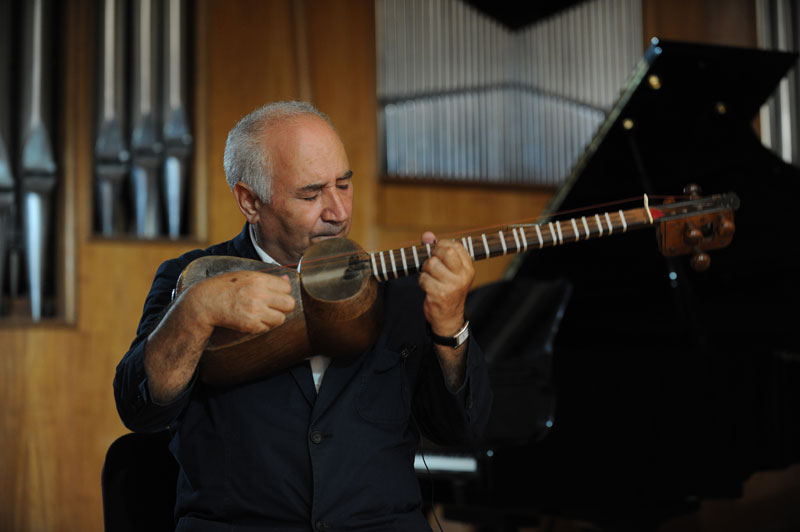(headline image; Professor Ramiz Guliyev – Photograph by Mamed Rahimov © 2010 by M.Rahimov/Ministry of Culture and Tourism)
The Azerbaijani tar is a long-necked plucked lute deeply rooted in the cultural fabric of Azerbaijan. Originating around 1870 by Sadigjan, it bears a distinct shape from its Persian counterpart and features unique components such as an additional bass string situated on a raised nut.
Unlike the Persian tar, it accommodates more strings, including two doubled resonance strings held by small metal nuts along the neck. These strings, resembling the rhythm strings of the Indian sitar, enhance the instrument’s tonal range. With a total of 11 playing strings and 17 tones, the Azerbaijani tar holds a revered status as the national instrument of Azerbaijan.
Recognizing its significance, UNESCO inscribed the craftsmanship, tradition, and performance of the tar in Azerbaijan onto its Intangible Cultural Heritage of Humanity list in 2012. The detailed craft of tar making is traditionally passed down through generations, often within families.
Craftsmen methodically select materials such as mulberry wood for the body, walnut wood for the neck, and pear wood for the tuning pegs. Using specialized tools, they shape the hollow body into a figure-eight form, which is then covered with the thin pericardium of an ox. The fretted neck is thoroughly attached, metal strings are installed, and the body is adorned with intricate mother-of-pearl inlay.
During performances, musicians hold the tar horizontally against their chest and pluck the strings with a plectrum, employing trills and various techniques to enrich the music.
Tar performances hold a central role in weddings, social gatherings, festive events, and public concerts, serving as a cultural beacon for Azerbaijanis.
Transmission of tar playing skills occurs through oral tradition, demonstration, and formal education at musical institutions. The craftsmanship and performance of the tar not only preserve cultural heritage but also contribute significantly to shaping the cultural identity of Azerbaijanis.
In the 1970s, Professor Ramiz Guliyev introduced a completely new performing style to the ancient art of mugam. He has been honored with various awards, among which is the UNESCO’s diploma for the “High mastery.”


